Signal channels 1, 2, 3, and 4 correspond to four positions of the input shaft radial, axial, and output shaft radial, and axial, respectively.
| Test number | Rotation speed/(r/min) | Load/(N · m) | Channel 2-442 Hz | Channel 2-884 Hz | Channel 4-442 Hz | Channel 4-884 Hz |
| Group 1 | 780 | 20 | 1.751 | 6.146 | 1.008 | 1.745 |
| Group 1 | 780 | 100 | 2.305 | 6.327 | 1.847 | 4.154 |
| Group 1 | 780 | 150 | 3.277 | 4.776 | 0.483 | 4.352 |
| Group 2 | 780 | 20 | 1.208 | 4.601 | 7.721 | 1.804 |
| Group 2 | 780 | 100 | 1.877 | 6.97 | 8.861 | 6.859 |
| Group 2 | 780 | 150 | 3.792 | 2.625 | 3.591 | 5.197 |
| Group 3 | 780 | 20 | 1.159 | 1.272 | 0.816 | 0.165 |
| Group 3 | 780 | 100 | 1.821 | 0.358 | 1.316 | 0.202 |
| Group 3 | 780 | 150 | 2.491 | 0.777 | 0.387 | 0.575 |
| Test number | Rotation speed/(r/min) | Load/(N · m) | Channel 2-833 Hz | Channel 2-1666 Hz | Channel 4-833 Hz | Channel 4-1666 Hz |
| Group 1 | 1470 | 20 | 1.686 | 2.462 | 2.969 | 2.873 |
| Group 1 | 1470 | 100 | 0.194 | 1.007 | 0.161 | 4.502 |
| Group 1 | 1470 | 150 | 0.254 | 0.874 | 0.256 | 2.442 |
| Group 2 | 1470 | 20 | 3.029 | 1.925 | 2.030 | 6.138 |
| Group 2 | 1470 | 100 | 0.286 | 0.747 | 0.225 | 3.131 |
| Group 2 | 1470 | 150 | 0.231 | 0.850 | 0.228 | 5.419 |
| Group 3 | 1470 | 20 | 1.349 | 1.625 | 2.079 | 0.642 |
| Group 3 | 1470 | 100 | 0.145 | 0.388 | 0.117 | 0.492 |
| Group 3 | 1470 | 150 | 0.196 | 0.470 | 0.180 | 0.469 |
Table 1 and Table 2 show a comparison of the first and second order harmonic vibration acceleration statistical results in Figures 1 to 6. Channel 2 is the input shaft axial direction, and channel 4 is the output shaft axial direction.
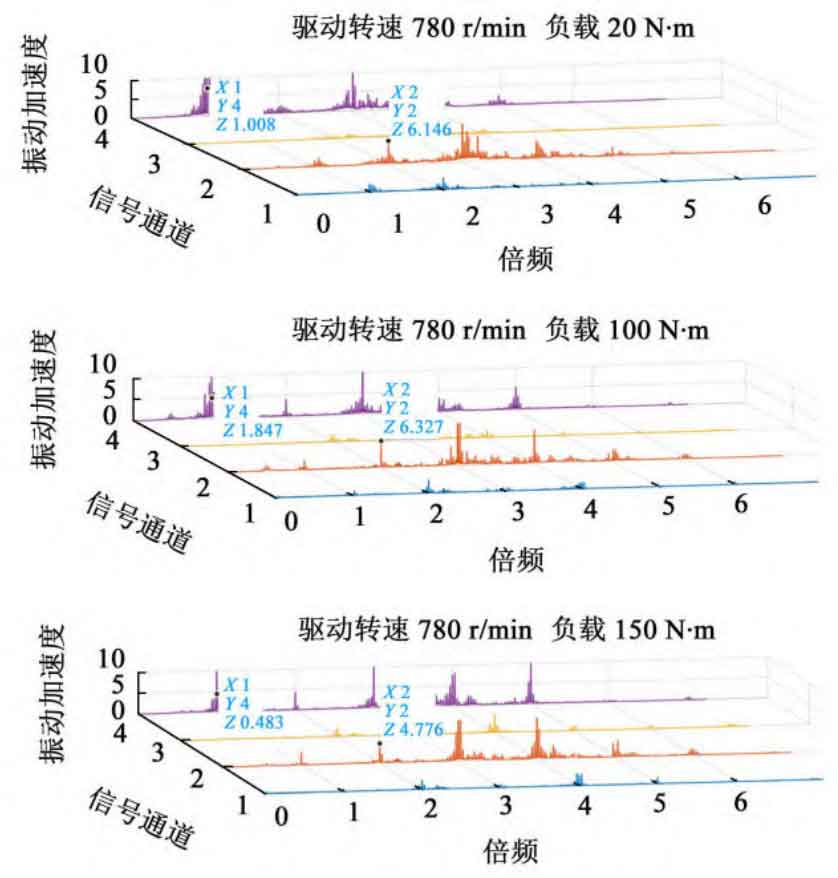
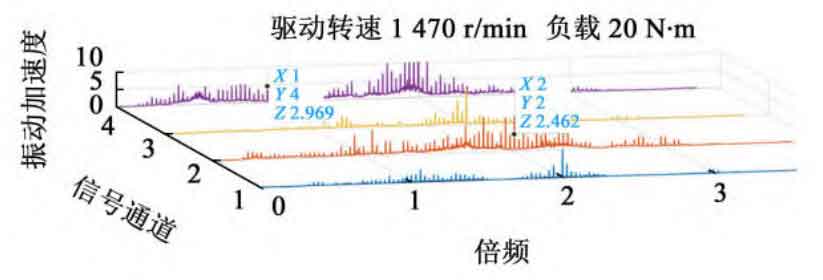
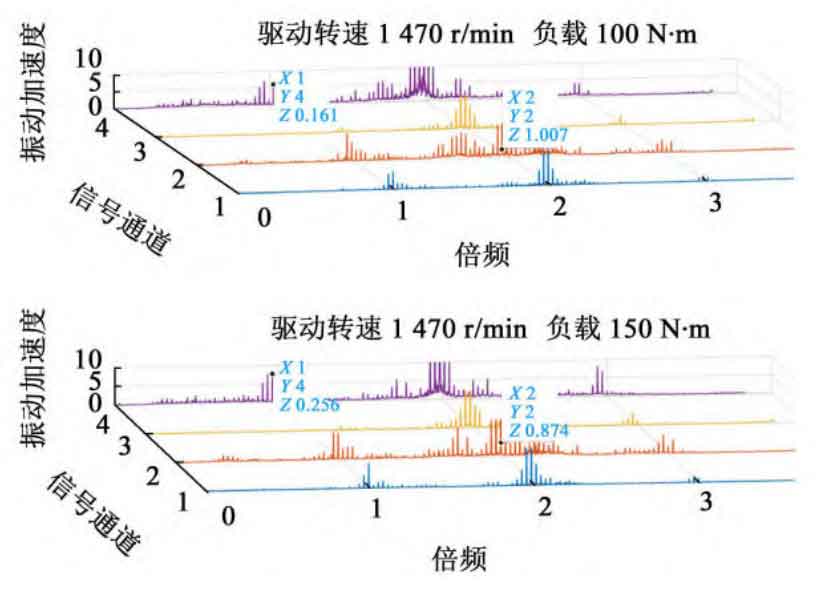
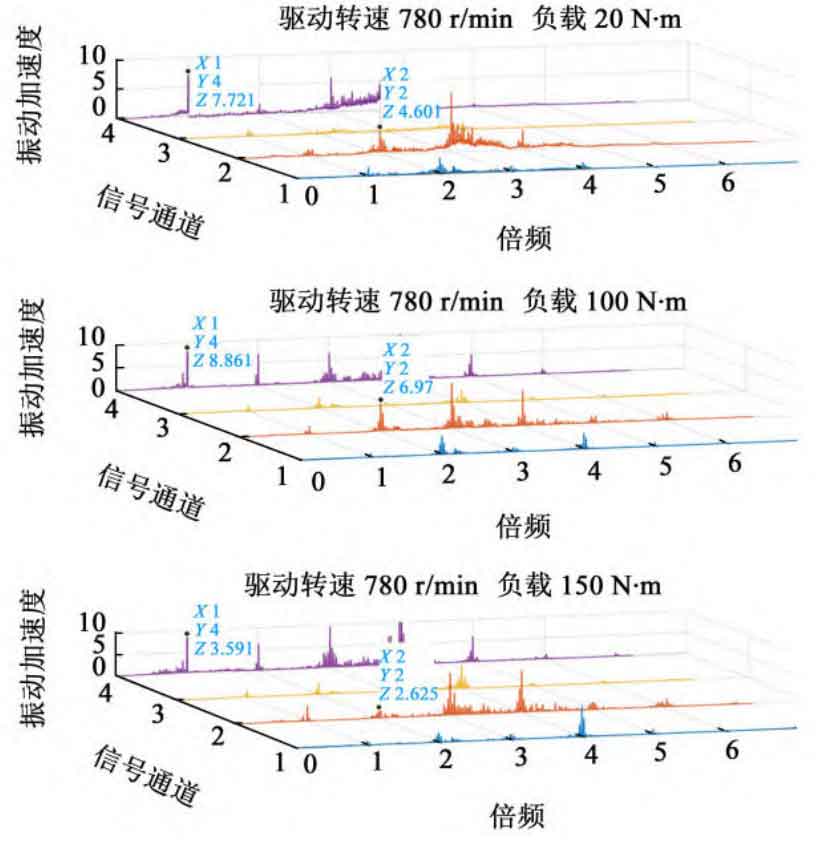
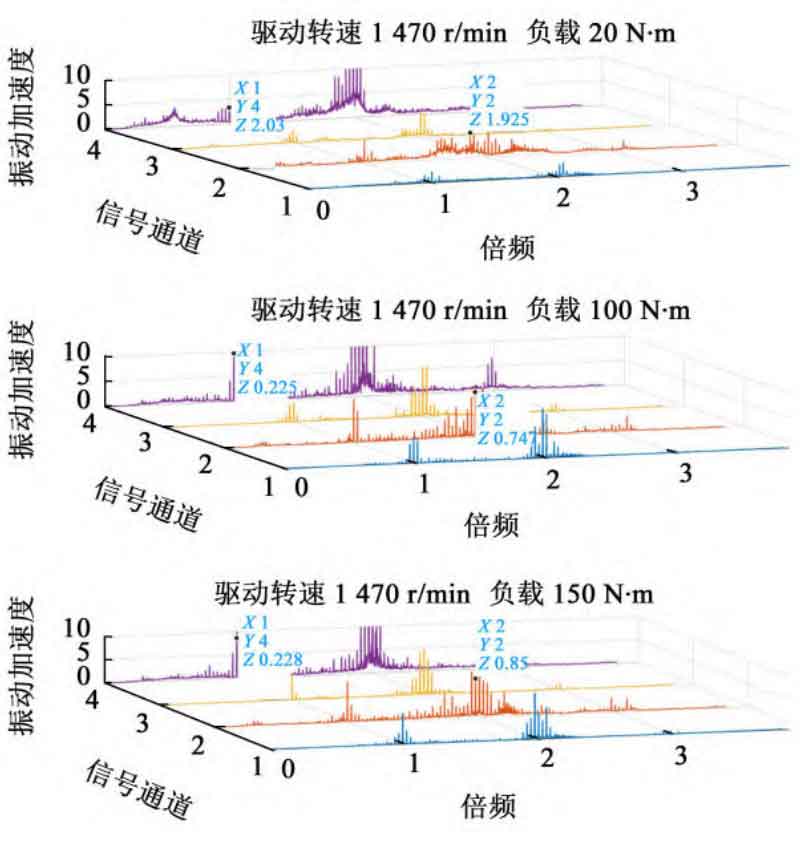
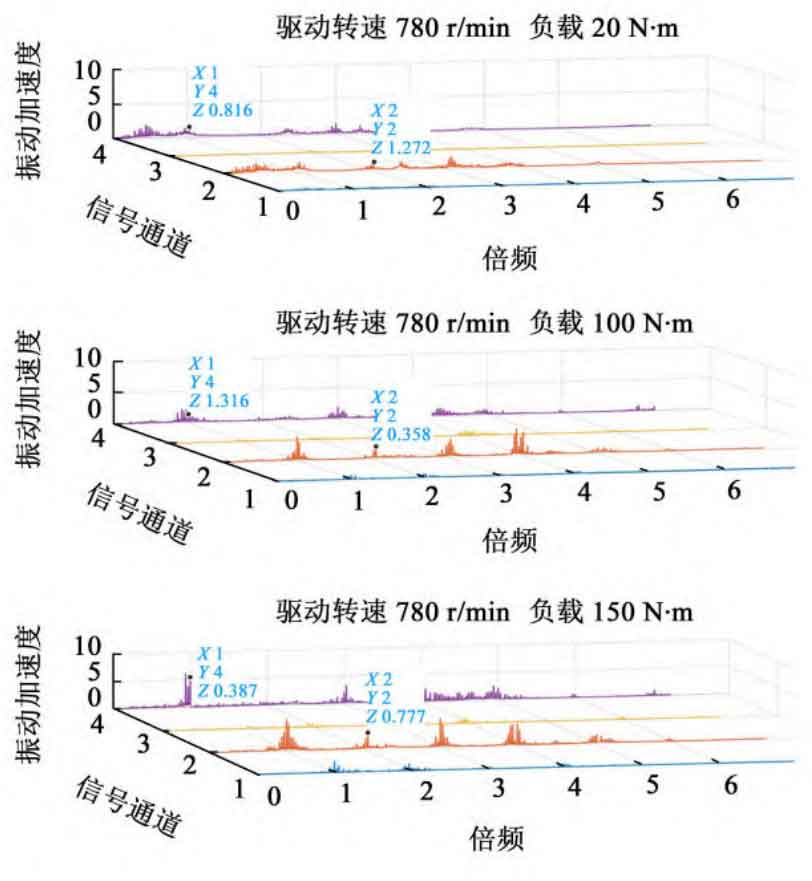
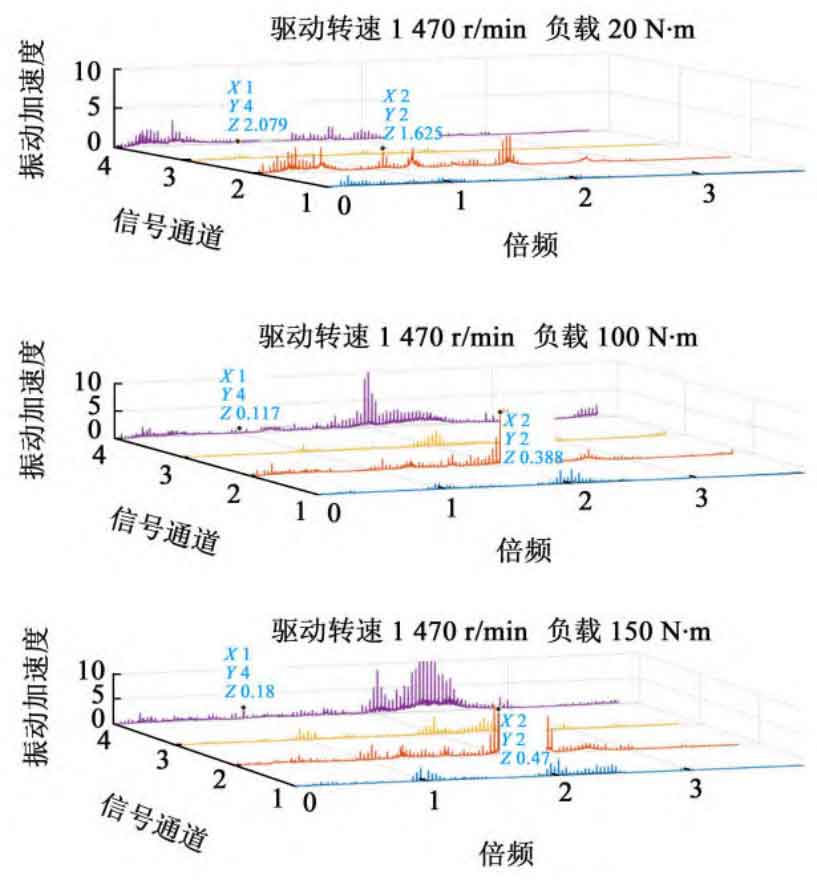
From the vibration acceleration values in Tables 1 and 2, it can be seen that:
(1) Rotation speed has a significant impact on spur gear vibration, while load has a relatively weak impact on vibration.
(2) Under the same working condition, the vibration acceleration of the third group of spur gear pairs is significantly reduced compared to the first and second groups.
(3) At low rotational speeds, the vibration acceleration amplitude at the fundamental frequency of the third group of tests at channel 2 is 20. 5% smaller than the vibration acceleration at the fundamental frequency of the first group of tests at channel 2 9%~33. 8%; The amplitude of fundamental frequency vibration acceleration at channel 4 is 19. 5% smaller 2%~28. 7%。
(4) At high rotational speeds, the vibration acceleration amplitude at the fundamental frequency of the third group of tests at channel 2 is 19. 5% smaller than the vibration acceleration at the fundamental frequency of the first group of tests at channel 2 9%~25. 6%; The amplitude of fundamental frequency vibration acceleration at channel 4 is 27. 7% smaller 3%~29. 9%。
(5) At a rotational speed of 1470 r/min and a load of 150 N · m, the third group of vibration accelerations at the fundamental frequency of theoretical simulation are 194 rad/s2, 177 rad/s2, and 153 rad/s2, respectively. The vibration accelerations of the three groups of tests at the fundamental frequency of channel 2 are respectively 0 254 m/s2、0. 231 m/s2、0. 196 m/s2, from the perspective of decline amplitude, the decline amplitude between the test and simulation groups is similar.
